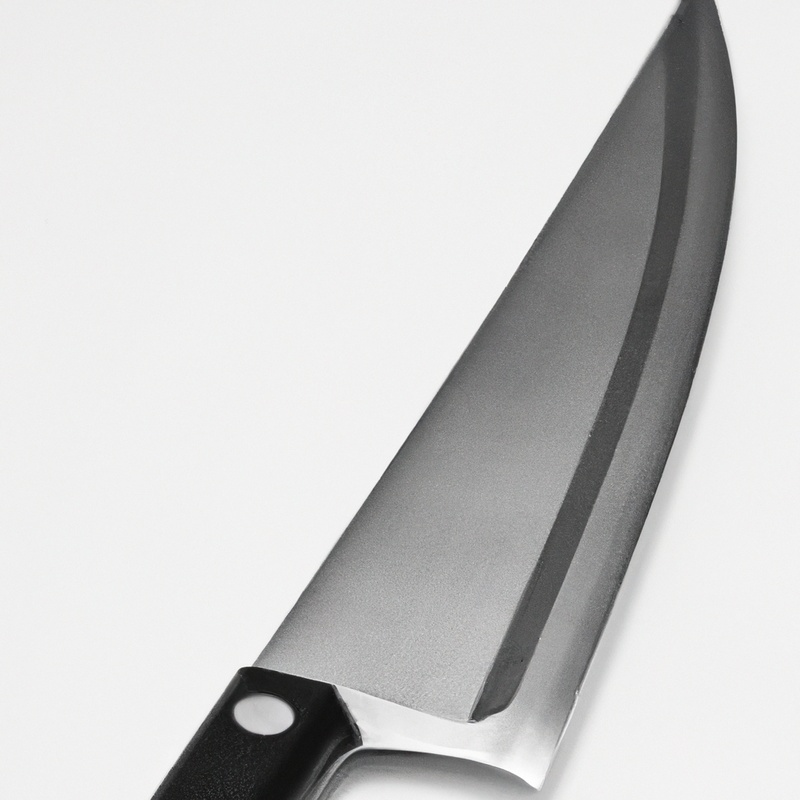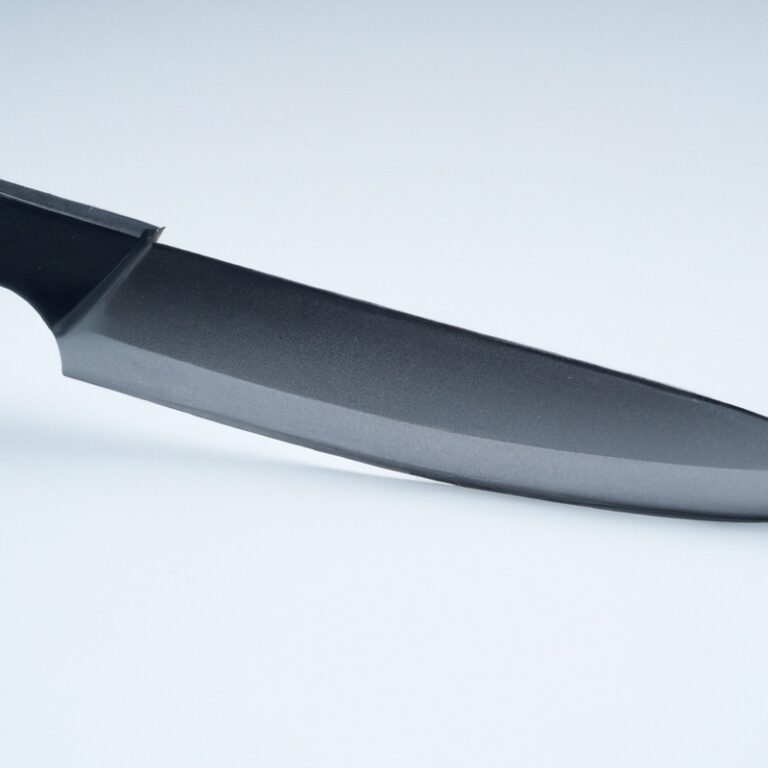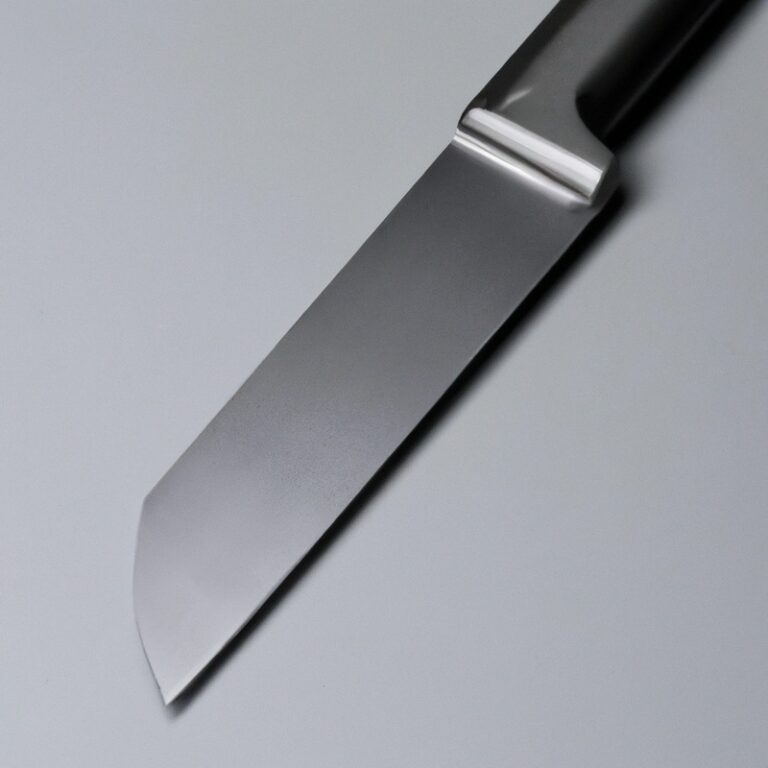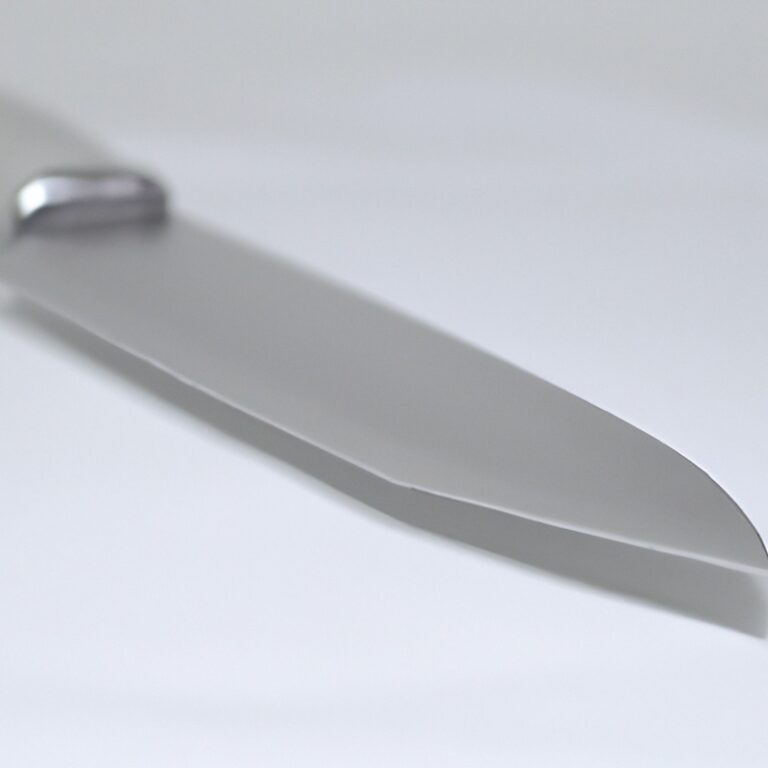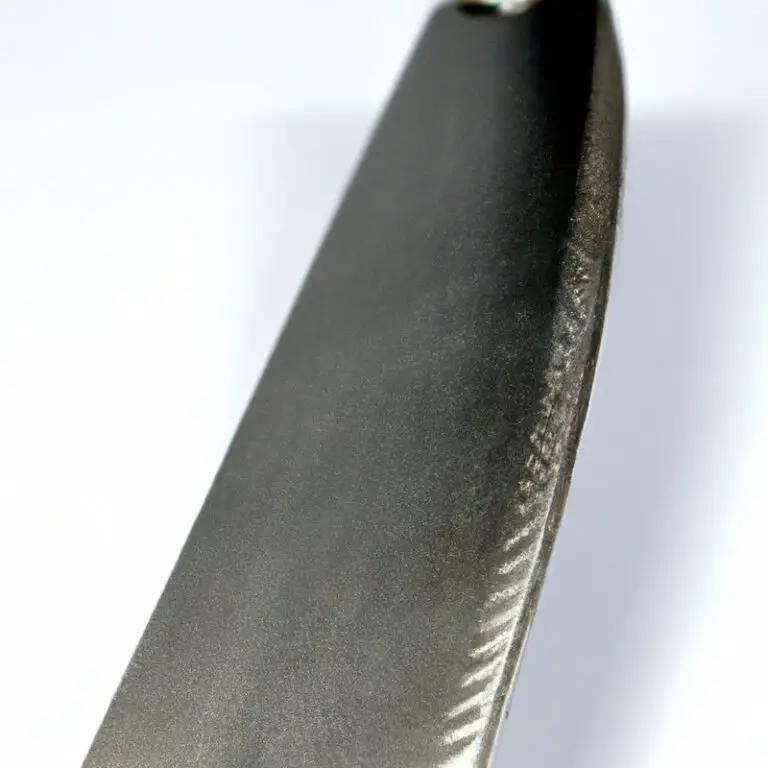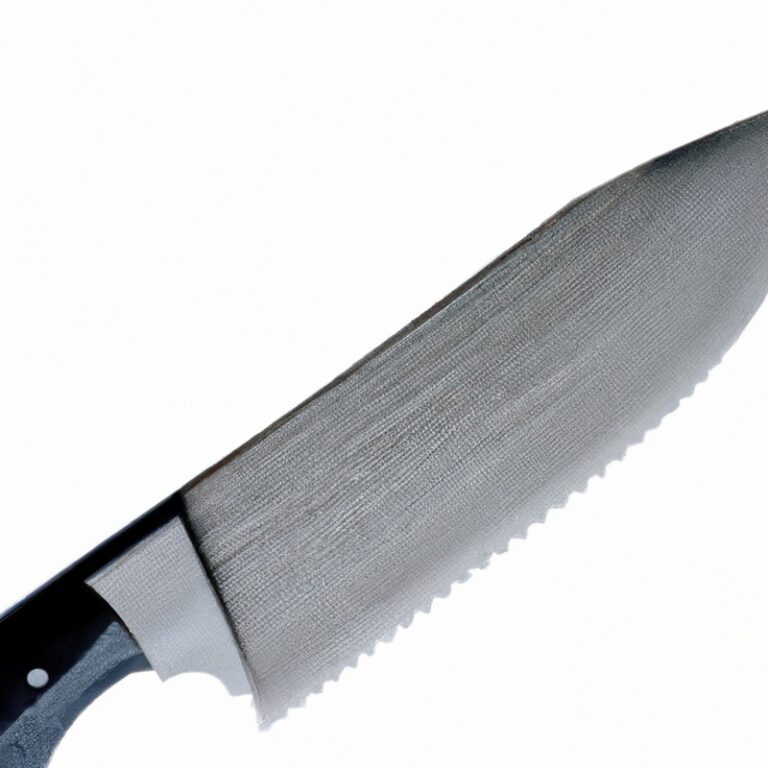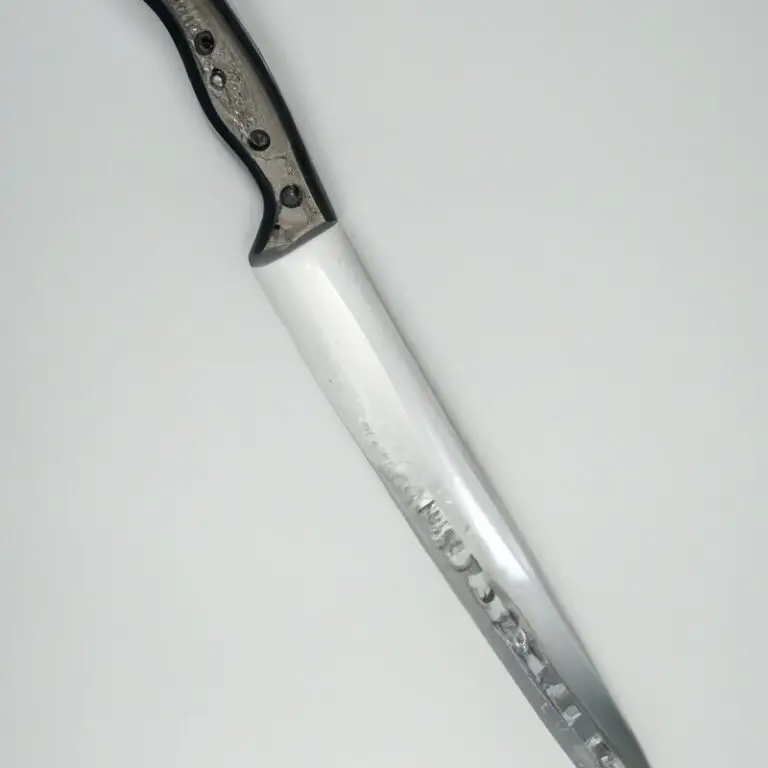What Safety Precautions Should I Take While Using a Serrated Knife?
Key Takeaways:
- Keep fingers clear of the blade to avoid accidental cuts.
- Use a cutting board with a non-slip surface to provide stability.
- Apply gentle, controlled pressure to prevent the knife from slipping.
- Regularly sharpen the serrated edge to ensure clean and efficient cuts.
Do you know what makes a serrated knife different from a regular kitchen knife? Well, those jagged teeth that slice through tough crusts or delicate skins.
But, have you ever stopped to think about the potential risks of using a serrated knife?
As a seasoned chef, I can assure you that proper safety precautions are crucial when it comes to handling these knives. In this article, I’ll delve into the potential risks, essential safety measures, additional tips, common mistakes to avoid, and the importance of proper knife skills and training.
So, grab your cutting board and let’s get slicing safely!
| Safety Precaution | Description |
|---|---|
| Use a cutting board | Always use a stable cutting board to prevent accidents and create a safe surface. |
| Hold the knife properly | Hold the handle of the serrated knife firmly to maintain control and avoid slipping. |
| Keep fingers away from the blade | Avoid placing your fingers in line with the blade to prevent accidental cuts. |
| Apply gentle pressure | Use light and even pressure while cutting to prevent the knife from slipping and reduce the risk of injury. |
| Store the knife safely | Store the serrated knife in a knife block or sheath to protect the blade and prevent accidental cuts. |
| Keep the knife sharp | A sharp serrated knife requires less force and reduces the chances of accidents. |
Understanding the Importance of Safety Precautions with Serrated Knives
The Potential Risks Associated with Serrated Knives
When it comes to using serrated knives, there are a few potential risks you should be aware of. These knives have sharp, jagged edges that can easily cut through food, but they can also cause injuries if not handled properly.
One risk is accidentally cutting yourself while trying to slice through tough or slippery foods.
Another risk is losing control of the knife due to its serrated edge catching on the food, which can lead to cuts or accidents. Additionally, the aggressive sawing motion required for serrated knives can cause strain or fatigue in your hands and wrists.
It’s important to be cautious and follow safety measures when using these knives to avoid any potential risks.
Why Proper Handling of Serrated Knives is Essential
Proper handling of serrated knives is essential to ensure safety in the kitchen. These knives have a sharp, saw-like edge that can easily cause accidents if not used correctly.
By practicing good knife handling techniques, you can reduce the risk of cuts and injuries.
It’s important to maintain a firm grip on the knife and position your hand correctly to avoid slipping. Additionally, using a stable cutting surface and keeping the knife sharp can also contribute to safe handling.
Always remember to prioritize safety when using serrated knives in the kitchen!
Essential Safety Measures for Using Serrated Knives
Selecting the Right Serrated Knife for Safe Use
When selecting a serrated knife for safe use, there are a few key factors to consider. First, choose a knife with a strong and durable blade made from high-quality materials like stainless steel.
Look for a serrated edge that is sharp and evenly spaced.
Additionally, consider the size and weight of the knife to ensure it feels comfortable and balanced in your hand. Finally, opt for a knife with a handle that provides a secure grip and is made from a non-slip material.
Taking the time to select the right serrated knife will significantly contribute to your safety while using it.
Proper Grip and Hand Positioning Techniques
When it comes to using a serrated knife safely, proper grip and hand positioning are crucial. Here are some techniques to keep in mind:
- Hold the knife firmly: Make sure to grip the handle with all your fingers, providing stability and control while cutting.
- Place your index finger on the spine of the knife: This helps maintain balance and keeps your hand away from the blade, reducing the risk of accidental cuts.
- Curl your fingers inward: Tucking your fingertips under and curling them inward keeps them safe from the blade and minimizes the chances of injury.
Remember, a secure grip and correct hand positioning can make a significant difference in ensuring your safety when using a serrated knife. Stay mindful of these techniques to avoid accidents and handle the knife efficiently.
Being Mindful of Knife Maintenance and Sharpness
To ensure your safety while using a serrated knife, it’s important to be mindful of knife maintenance and sharpness. Regularly inspect your knife for any signs of damage, such as bent or broken teeth, and replace it if necessary.
Keep the blade sharp to avoid slipping and applying excess force.
Sharpening stones or a knife sharpener can help maintain the blade’s edge. Additionally, clean and dry your knife after each use to prevent rusting and maintain its longevity.
Taking these precautions will help you use a serrated knife safely and effectively.
Additional Safety Tips for Using Serrated Knives
Using a Cutting Board with a Non-Slip Base
When using a serrated knife, it’s important to have a cutting board with a non-slip base. This will help keep the board in place while you’re cutting, reducing the risk of accidents.
A non-slip base provides stability and prevents the cutting board from moving around, allowing you to have better control over the knife.
Look for cutting boards with rubberized or grippy surfaces that can effectively grip your countertop. It’s a small but significant safety measure that can make a big difference in preventing slips and injuries.
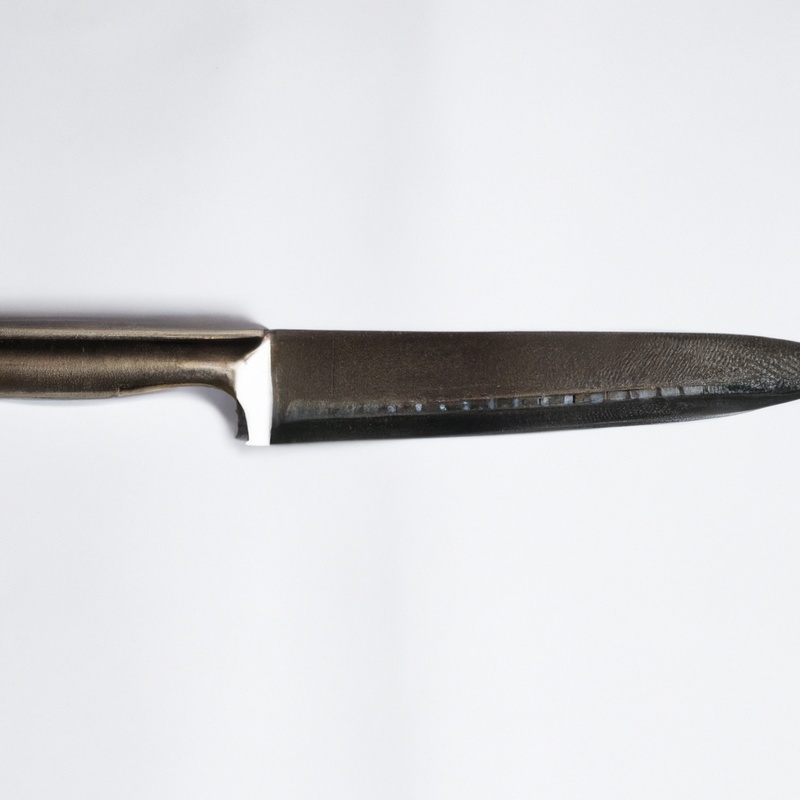
Avoiding Excessive Force or Sawing Motion
When using a serrated knife, it’s important to avoid using excessive force or a sawing motion. Instead, let the serrations do the work for you.
Apply a gentle downward pressure and use a back-and-forth slicing motion.
This will help maintain control and prevent the knife from slipping or causing injuries. Remember, a serrated knife is designed to cut smoothly through tough surfaces, so there’s no need for extra force.
By using the right technique, you can safely and effectively use your serrated knife without any issues.
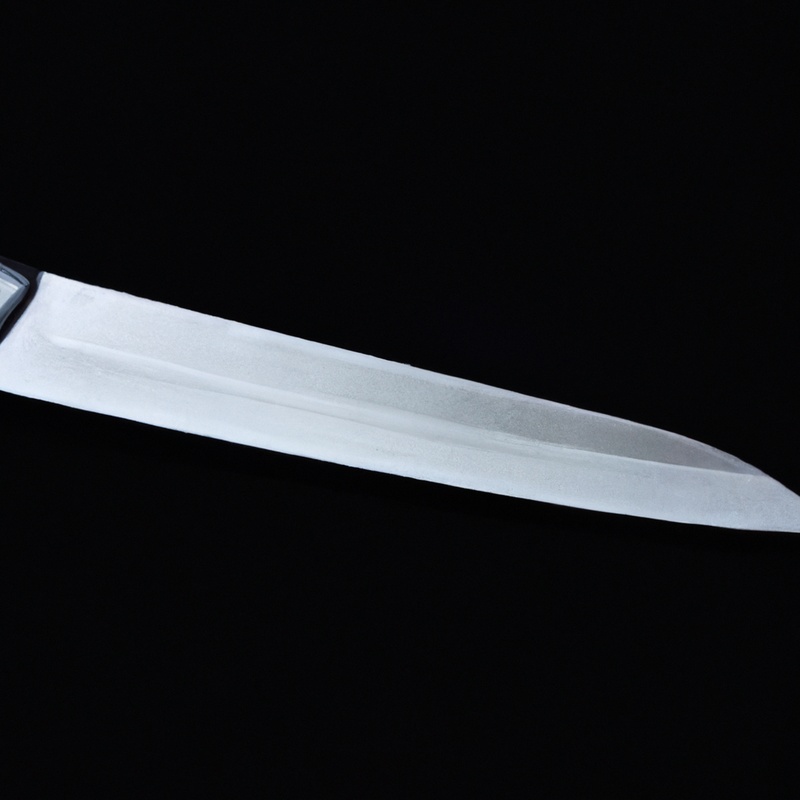
Keeping Fingers and Hands Clear of the Blade
When using a serrated knife, it’s crucial to keep your fingers and hands clear of the blade to prevent injuries. Here are a few tips to help you stay safe:
- Use a cutting board with a groove or a non-slip base to keep it steady while cutting.
- Keep your non-dominant hand in a “claw” grip, with your fingertips curled under to protect them.
- Position your dominant hand on the handle, away from the blade.
- Avoid placing your fingers on the cutting line to prevent accidental cuts.
- If you need to remove food stuck in the serrations, use a tool like a fork or a toothpick, never your fingers.
By being mindful of your hand and finger placement, you can greatly reduce the risk of accidents while using a serrated knife. Stay safe!
Guidelines for Cleaning and Storing Serrated Knives
Cleaning and storing your serrated knives properly is essential for maintaining their longevity and functionality. Here are some guidelines to follow:
- Hand-washing: Always wash your serrated knives by hand, as the dishwasher can damage the blade and handle. Use warm, soapy water and a non-abrasive sponge to clean the knife thoroughly.
- Drying: After washing, make sure to dry the knife completely to prevent rusting. Use a towel to remove any moisture, paying special attention to the serrated edge.
- Storage: Store your serrated knives in a knife block, sheath, or drawer organizer to protect the blade and prevent accidents. Avoid storing them loosely in a drawer where they can bump against other objects.
- Avoid moisture: Moisture can cause damage to the blade, so it’s important to keep your serrated knife dry at all times. If the knife becomes wet during use, dry it immediately.
- Sharpening: Serrated knives require special sharpening techniques, so it’s best to leave this task to a professional knife sharpener. Do not attempt to sharpen the serrated edge yourself.
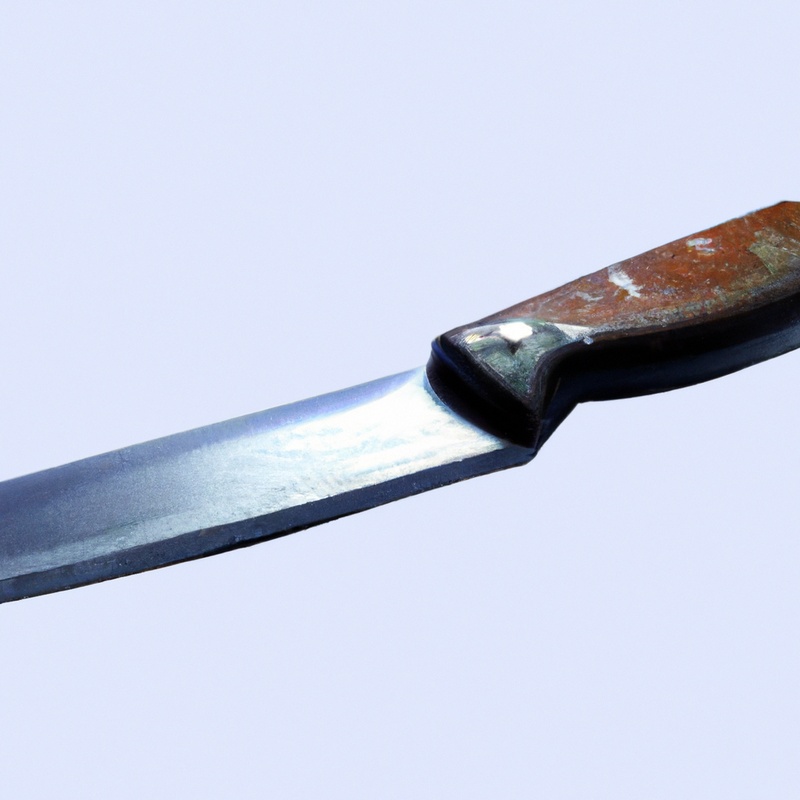
Common Mistakes to Avoid While Using Serrated Knives
Using Serrated Knives for Inappropriate Tasks
Using serrated knives for inappropriate tasks can lead to accidents and damage to both the knife and the item you’re trying to cut. Here are some common inappropriate tasks to avoid using serrated knives for:
- Hard or frozen foods: Serrated knives are designed for softer foods like bread and tomatoes. Using them to cut through hard or frozen foods can cause the blade to slip and lead to injuries.
- Carving meat: Serrated knives are not suitable for carving meat. They can tear and shred the meat instead of making clean slices, resulting in uneven cuts and a less appealing presentation.
- Chopping vegetables: Serrated knives are not designed for chopping vegetables. They don’t provide the necessary control and precision for fine, even cuts. Instead, use a chef’s knife or a santoku knife for this task.
- Opening cans or packages: Serrated knives are not a safe or efficient tool for opening cans or packages. Opt for a can opener or scissors instead to avoid accidents and damage to the knife.
Remember, using the right knife for the right task ensures both your safety and the longevity of your knives.
Not Paying Attention to Knife Orientation
Not paying attention to knife orientation can be a dangerous mistake. It’s important to know which side of the knife is the cutting edge and which side is the back edge.
Using the knife with the wrong orientation can lead to accidents and injuries.
Take a moment to familiarize yourself with the knife before using it, ensuring that the cutting edge is facing the right direction. This simple precaution can help prevent accidents and ensure safer use of serrated knives.
Neglecting to Use Knife Guards or Sheaths
Neglecting to use knife guards or sheaths is a common mistake that can lead to accidents and injuries. The purpose of these protective covers is to secure the blade and prevent it from coming into contact with other objects or body parts.
Without a guard or sheath, the sharp edges are left exposed, increasing the risk of accidental cuts or punctures.
It is important to always use the appropriate cover when storing or transporting a serrated knife to ensure everyone’s safety.
Importance of Proper Knife Skills and Training
The Benefits of Learning Proper Knife Techniques
Learning proper knife techniques has numerous benefits. Firstly, it significantly reduces the risk of accidents and injuries in the kitchen.
By mastering knife skills, you will be able to handle the knife safely and effectively.
Secondly, it improves efficiency in food preparation. With proper techniques, you can slice, dice, and chop ingredients more quickly and precisely, saving you time and effort.
Lastly, learning proper knife techniques enhances the overall cooking experience.
It gives you a sense of confidence and control, allowing you to enjoy the process of food preparation. By investing in learning proper knife techniques, you can elevate your culinary skills and make cooking more enjoyable.
Seeking Professional Instruction or Resources
If you want to enhance your knife skills and ensure safety while using a serrated knife, seeking professional instruction or resources is a great idea. There are various options available to help you learn proper techniques and precautions.
Consider signing up for a cooking class that covers knife skills, or find online tutorials and videos from reputable sources.
Some kitchen stores also offer demonstrations and workshops on knife handling. By learning from experts and utilizing reliable resources, you can improve your skills and minimize the risks associated with using a serrated knife.
Final Verdict
It is crucial to prioritize safety when using serrated knives in the kitchen or any other setting. By understanding the potential risks and adopting proper handling techniques, such as selecting the right knife, maintaining a stable cutting surface, and keeping the blade sharp, accidents can be prevented.
Additional safety measures, like using a non-slip cutting board, avoiding excessive force, and practicing good knife storage and cleaning habits, are also essential.
It’s important to remember that proper knife skills and training can significantly reduce the risk of accidents and enhance your overall culinary experience. Stay safe and enjoy using serrated knives with confidence!

